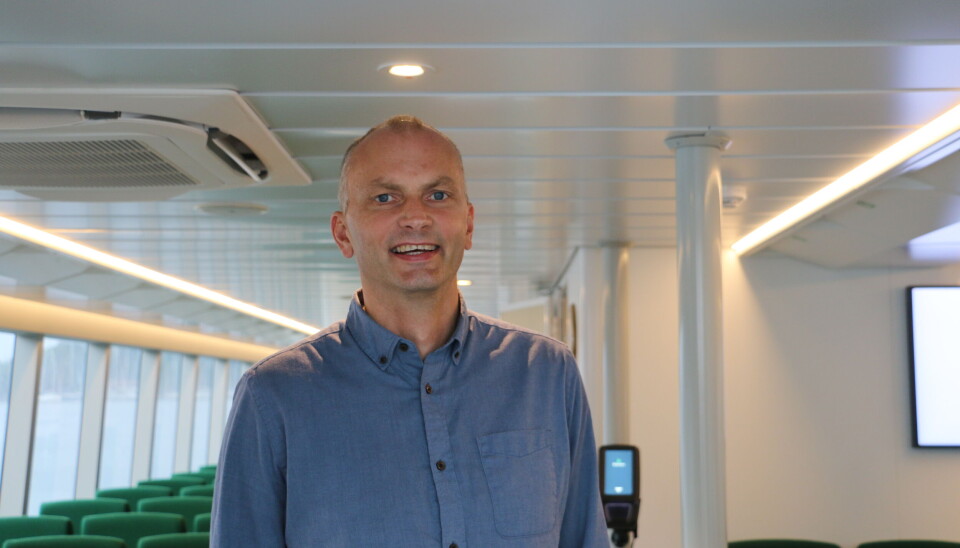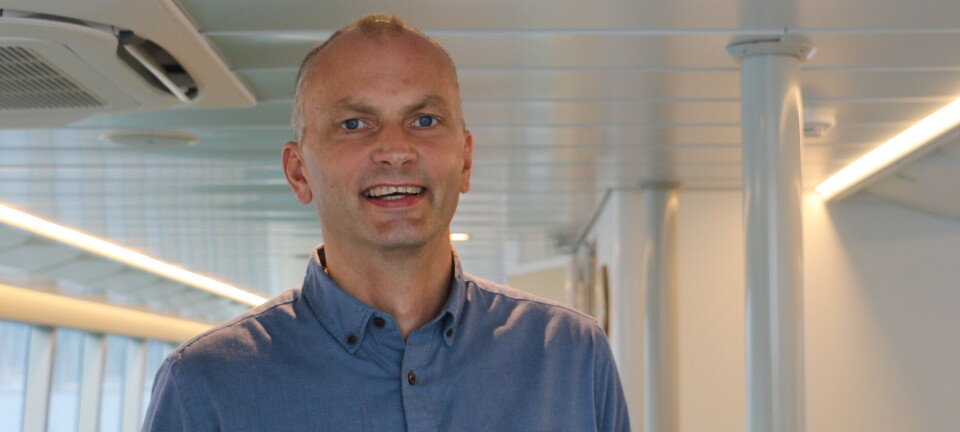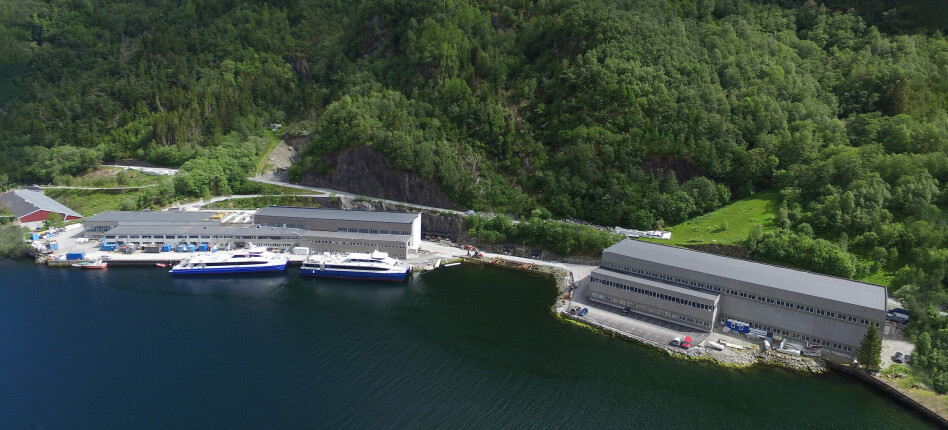
Starting a new revolution
“The emissions from our 10 fast ferries are as high as all our buses combined. Thus, a fully electric fast ferry was the way to start,” says project manager Mikal Dahle about why "Medstraum" was created.
“It was absolutely necessary for us to find a way to handle zero emissions on fast ferries, if we are to be able to achieve our goals of becoming a zero emissions company,” he says.
When the TrAM (Transport Advanced and Modular) project emerged as an opportunity, the industry partners needed a county council that could part-finance the project, and therefore contacted Rogaland County Council. They then contacted Kolumbus, who was the natural leader of the project.
“Both the technical and financial risks were high when the politicians agreed to go for this. If we had not been able to show that it was possible within the technical and financial framework that had been given, it would have been more difficult. But all the participants have been good at finding solutions that mean that we have reached the goal both within the financial framework and that the vessel performs so well in tests,” says Mikal Dahle.
Was it a point to be first out with such a vessel?
“For us in Kolumbus, we were interested in a prototype being built, so we would know that the market is ready to build many such boats in the future. Of all our 10 vessels, "Medstraum" will go on the "easiest" route. There are very short distances with low energy consumption. When we see that it can be done, we believe that the industry can stretch the technology further to manage even longer connections.”
It is the first time that Kolumbus has become the owner of its own vessel. There has never been any ambition for Rogaland County Council to become shipowners. Usually a consortium is announced, and it is the winner of the tender who both builds and owns the vessels.
“It was probably a small challenge for the county. But the solution that we have found, where we are a shipping company that undertakes the construction, but then leases it directly to an operator who has both the experience and the personnel needed to operate such a vessel, is a good way to operate it and still get efficient and competent operation of this boat.”
The shipping company Norled will be responsible for the actual operation of the vessel, and the crew on board are their employees.
Emission free vessels are coming
It might have been easier for Kolumbus to challenge the industry to develop and build such a pioneering vessel itself. But it will come, according to Dahle.
“In the tender round that is currently underway, we do not explicitly say that it must be a zero-emission vessel. But in the tender requirements, we place 30% emphasis on CO2 emissions. In addition, we have received support from the Norwegian Environment Agency, which is used as a deduction for those who offer zero-emission vessels. I think that will mean that the vast majority of boats from 2024 will be such vessels.”
Dahle highlights the maritime cluster Maritime Cleantech as a key to the project being realized.
“It is a very good example of trust-based Norwegian business with very competent partners. Instead of apportioning blame, there has been a great focus on solving the challenges that may arise. I believe that the Norwegian maritime industry is very well equipped to take on such technologically challenging projects.”
The fact that Norwegian authorities challenge the maritime industry to come up with technological innovations is something that has been successful in the past. That can be seen by simply reading the list of previous Ship of The Year winners. The world's first gas ferry, the world's first electric ferry and the world's first hydrogen ferry were all built in Norway and have all won the award. Dahle believes that is an advantage.
“The public sector has the financial muscle to take such a risk and thus pave the way. If another shipping company were to enter into a contract to build such a vessel at the same time as we did, then they would have had to price in the risk that we have taken. But now the industry has seen what can be done and what challenges it faces. Then you can get a more sensible pricing for future vessels”, he says.
Mikal Dahle explains that it was both a natural and safe choice for Kolumbus that Fjellstrand Verft would be responsible for the construction of "Medstraum". Both because they have a long experience of building fast ferries, but not least because they built MF "Ampere", which started the electric ferry revolution along the Norwegian coast.
“It has been very important to have people with us who know both possibilities and limitations that we as customers do not have a full overview of. We are good at managing a good route offer for our customers, not at building boats,” he emphasises.
Kolumbus and Fjellstrand Verft were in the process of finalising the contract for the construction of the vessel when the Covid-19 pandemic hit Norway. The yard then wanted to wait to sign the contract until they had a better overview of the situation.
“A few months later, we took it up again and signed the contract. There have been many challenges during the process, but they have been resolved quite quickly. When construction was underway, we experienced longer delivery times for several of the components as an after-effect of the pandemic. But still, we have stayed more or less within the time frame that was set,” says Dahle.
Interest from abroad has been great throughout the project, which is not unexpected as all the while the EU has been a solid partner. Especially from London, people have closely followed what is happening. They have a desire to achieve low or zero emission transport on the Thames. They look at the "Medstraum" project for both cargo and passenger traffic on the river.
“In addition, there is interest in how we have achieved this and what challenges we have faced and costs,” says Dahle.
What do you tell them, then?
“Lately I have focused on how important it is to have competent partners, which we have been lucky to have. We have also emphasised the importance of transparency and trust in the project and that it is an important factor in getting the first vessel built. Then it might be easier next time.”
What does winning this award mean to you?
“I thought it was a great honour just to be nominated. I believe it has extra importance for our industrial partners who can use this to document their work. Winning is confirmation that this is something that is seen outside Rogaland, and we are really happy about that,” emphasises Dahle.












